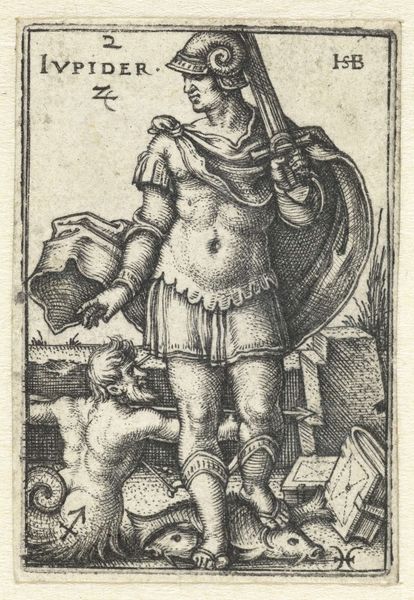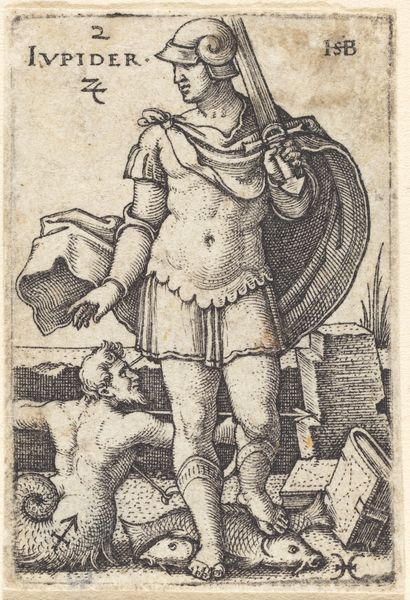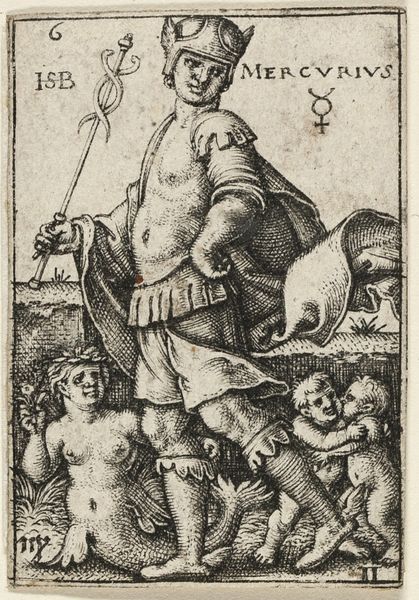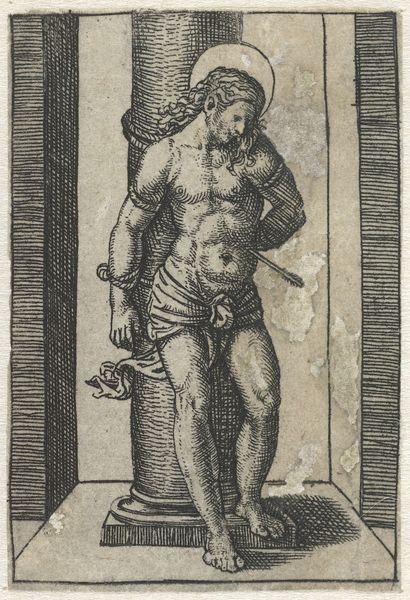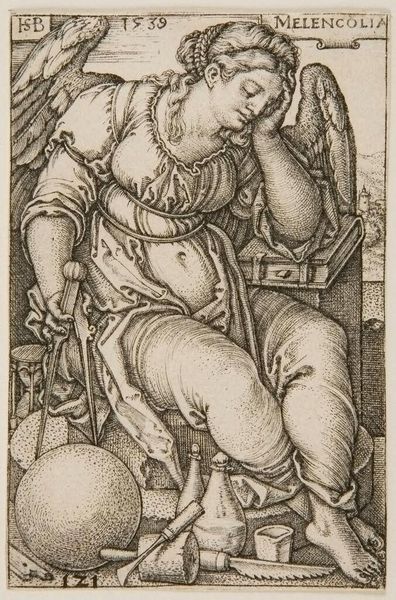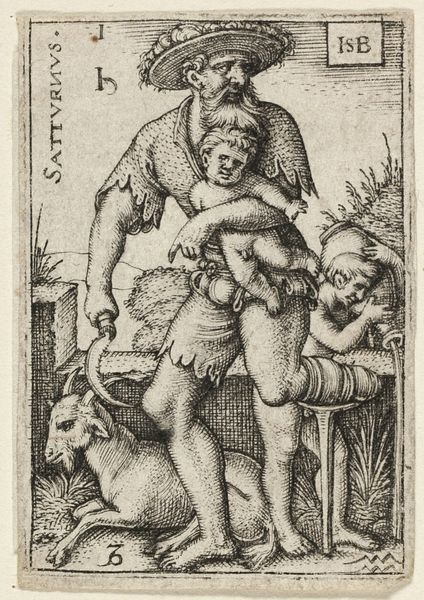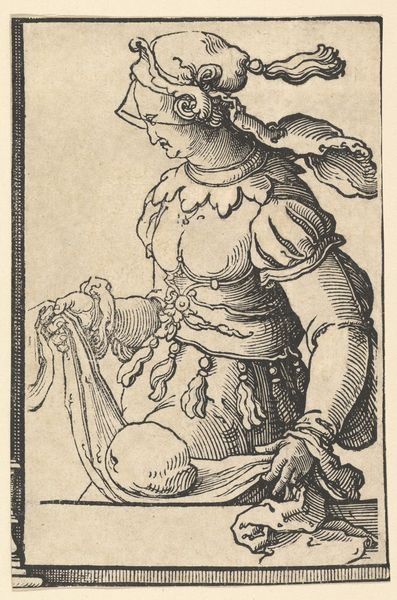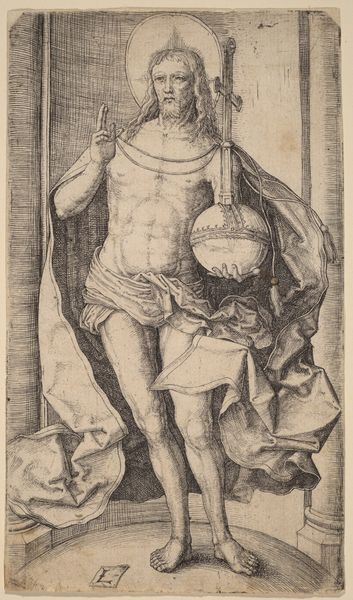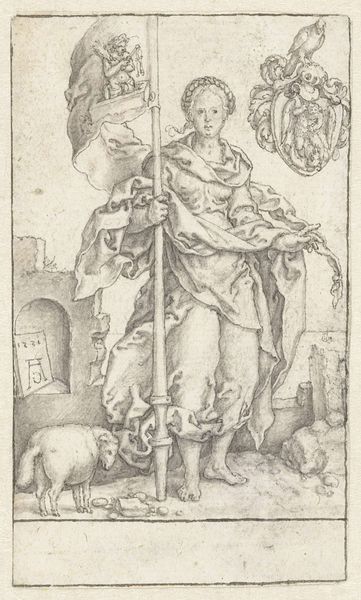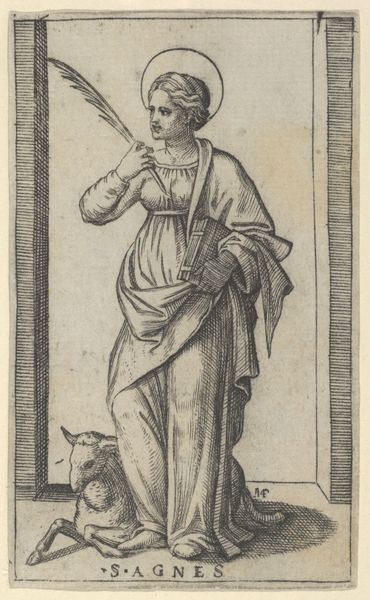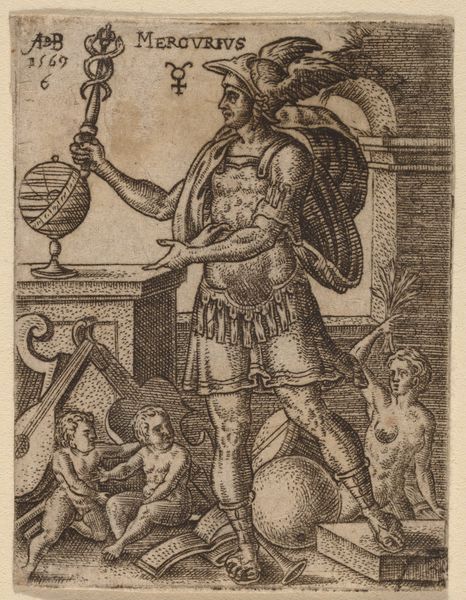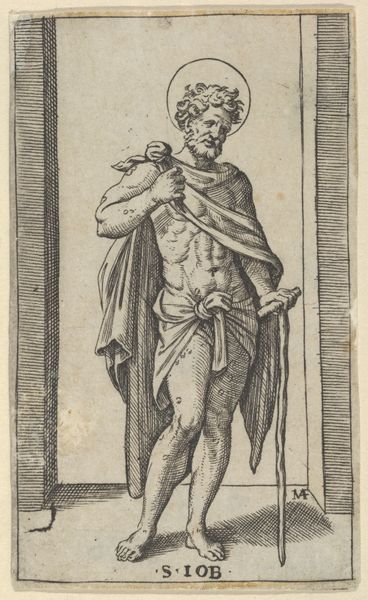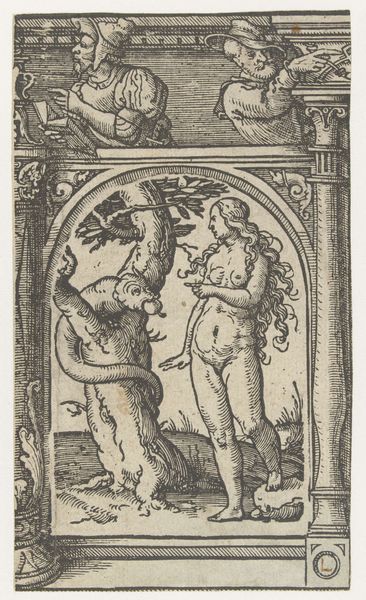
Jupiter, plate two from The Seven Planets with the Zodiacs 1539
0:00
0:00
drawing, print, paper, engraving
#
drawing
# print
#
figuration
#
paper
#
ancient-mediterranean
#
history-painting
#
northern-renaissance
#
engraving
Dimensions: 45 × 30 mm (sheet)
Copyright: Public Domain
Curator: Here we have “Jupiter, plate two from The Seven Planets with the Zodiacs,” an engraving created in 1539 by Sebald Beham, currently held in the collection of the Art Institute of Chicago. Editor: It’s striking. Jupiter, or "Ivpiter" as it's spelled here, dominates the scene. The fine lines creating textures and shading give it a weighty, almost sculptural presence despite being a print on paper. There is also this juxtaposition of mythical figures alongside tools, a kind of blurring of symbolism and functional objects. Curator: Indeed. Beham was a key figure in the German Renaissance, and this engraving reflects a fascination with classical antiquity and the renewed interest in planetary influences during the period. This work is a printed example of how astrology was culturally consumed and materialized for sixteenth-century viewers. Editor: And what a materiality! I’m captivated by the dense, almost chaotic composition. The varying line weights and the clear visual separation between the standing figure and all that surrounds it underscores the significance of his role. The image begs for analysis based on the means employed for its production, not just the story it conveys. I would say that in terms of materials alone, it is as much a complex history of labor, craft, and access to resources. Curator: That's an important consideration. Think about the role printmaking played in disseminating knowledge and ideas during the Reformation. The image and Beham’s personal interpretation is distributed for viewing, study, and contemplation as more people learn about the planets as cultural forces. His artistic decisions reveal much about the cultural anxieties and interests of his time. Editor: Absolutely, there's something to be said about that visual weight – it certainly translates well, and seems so contemporary! A lot of information is rendered into such a small size – this would fit comfortably in my palm, but demands such great attention to detail to be able to take it all in. Curator: The print becomes a vehicle for negotiating the past with the present and perhaps it serves as a method for shaping future perspectives within religious institutions. Editor: Exactly. Its accessible size made it an easy medium to possess. Considering the resources needed to develop it, I would not go so far as to call this populist—there remains so much to investigate about production and labor required to create engravings like this. Curator: This has changed how I approach this work now. The material conditions of printmaking adds even further to my understanding of it as a unique, individual interpretation. Editor: Same. Paying attention to process has re-enlivened my appreciation of the subject.
Comments
No comments
Be the first to comment and join the conversation on the ultimate creative platform.
